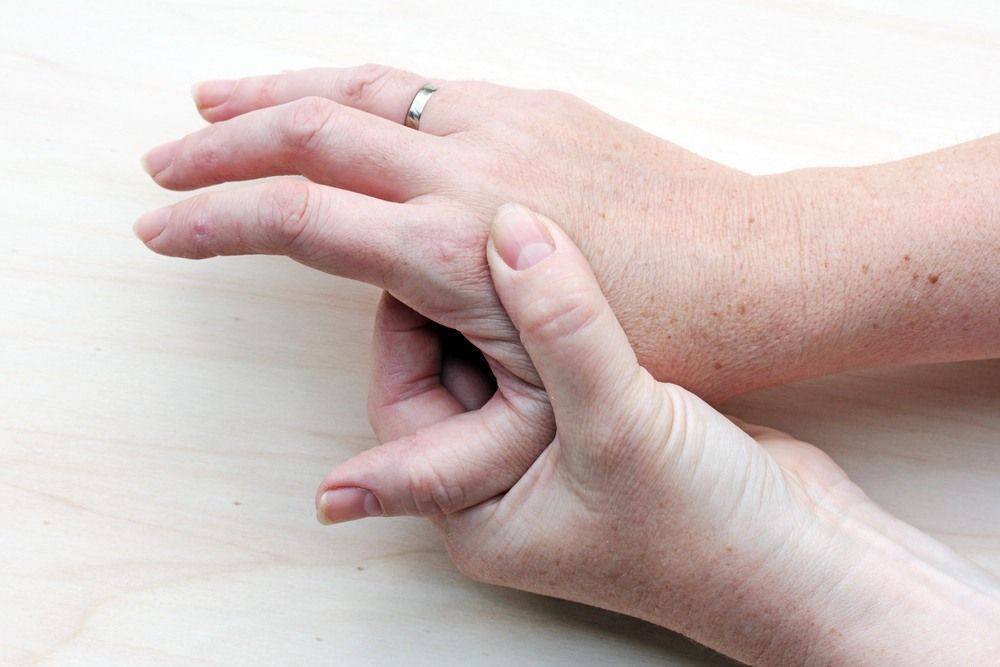Arthritic Fingers Guide: Symptoms Uncovered

The human hand, a marvel of complexity and dexterity, is comprised of 27 bones, 29 joints, and over 100 ligaments, tendons, and muscles. However, for millions of people worldwide, the intricate mechanisms of the hand can be severely disrupted by a debilitating condition known as arthritis. Specifically, arthritic fingers can significantly impact an individual’s quality of life, making everyday tasks a challenging and painful ordeal. In this comprehensive guide, we will delve into the symptoms of arthritic fingers, explore the various forms of arthritis that can affect the fingers, and discuss the potential causes and risk factors associated with this condition.
Understanding Arthritis in the Fingers
Arthritis is a broad term that encompasses over 100 distinct conditions, all of which affect the joints and surrounding tissues. When it comes to the fingers, arthritis can cause a wide range of symptoms, from mild discomfort to severe pain and disability. The primary forms of arthritis that can affect the fingers are osteoarthritis (OA), rheumatoid arthritis (RA), and psoriatic arthritis (PsA). Each of these conditions has its unique characteristics and effects on the fingers.
Osteoarthritis (OA) in the Fingers
Osteoarthritis, the most common form of arthritis, is characterized by the breakdown of cartilage in the joints. In the fingers, OA can lead to the formation of bony growths, known as Heberden’s nodes, which can cause pain, stiffness, and limited range of motion. The symptoms of OA in the fingers often develop gradually, allowing individuals to adapt and find ways to manage their condition.
Rheumatoid Arthritis (RA) in the Fingers
Rheumatoid arthritis, an autoimmune disease, causes the body’s immune system to attack the lining of the joints, leading to inflammation, pain, and swelling. In the fingers, RA can result in deformities, such as boutonniere or swan neck deformities, and can significantly impair hand function. The onset of RA symptoms can be sudden and unpredictable, making it challenging for individuals to cope with the condition.
Psoriatic Arthritis (PsA) in the Fingers
Psoriatic arthritis, associated with the skin condition psoriasis, can cause inflammation, pain, and swelling in the fingers. PsA can lead to the development of dactylitis, a condition characterized by the swelling of entire fingers, and can also cause the formation of pitted nails and other skin lesions. The symptoms of PsA can be quite debilitating, making it essential for individuals to seek medical attention promptly.
Symptoms of Arthritis in the Fingers
The symptoms of arthritic fingers can vary depending on the type of arthritis and the severity of the condition. However, some common symptoms include:
- Pain and stiffness: Pain and stiffness in the fingers, particularly after periods of rest or inactivity.
- Swollen joints: Inflammation and swelling in the joints, which can cause the fingers to appear red, warm, and tender.
- Limited range of motion: Reduced flexibility and mobility in the fingers, making everyday tasks, such as grasping or typing, more challenging.
- Deformities: Abnormal curvatures or bends in the fingers, such as boutonniere or swan neck deformities, which can be caused by RA or other forms of arthritis.
- Numbness and tingling: Loss of sensation or unusual sensations, such as numbness, tingling, or burning, in the fingers.
Causes and Risk Factors
While the exact causes of arthritis are not fully understood, several risk factors can contribute to the development of arthritic fingers. These include:
- Genetics: Family history can play a significant role in the development of arthritis, particularly RA and PsA.
- Age: The risk of developing OA increases with age, while RA and PsA can affect individuals of any age.
- Injury: Trauma to the fingers or hands can increase the risk of developing OA.
- Obesity: Excess weight can put additional stress on the joints, contributing to the development of OA.
Management and Treatment Options
While there is no cure for arthritis, various management and treatment options can help alleviate symptoms and improve quality of life. These include:
- Medications: Pain relievers, anti-inflammatory medications, and disease-modifying antirheumatic drugs (DMARDs) can help manage symptoms and slow disease progression.
- Physical therapy: Gentle exercises and stretching can help maintain range of motion and strength in the fingers.
- Occupational therapy: Adaptive devices and techniques can assist with daily activities and improve hand function.
- Lifestyle modifications: Maintaining a healthy weight, avoiding repetitive strain, and managing stress can help reduce symptoms and prevent further damage.
FAQs
Can arthritis in the fingers be prevented?
+While there is no guaranteed way to prevent arthritis, maintaining a healthy weight, avoiding injury, and managing stress can reduce the risk of developing arthritic fingers.
How can I manage arthritis pain in my fingers?
+Managing arthritis pain in the fingers can be achieved through a combination of medications, physical therapy, and lifestyle modifications, such as maintaining a healthy weight, avoiding repetitive strain, and managing stress.
Can arthritis in the fingers be cured?
+Currently, there is no cure for arthritis. However, early diagnosis and treatment can significantly impact the management of arthritic fingers and improve quality of life.
In conclusion, arthritic fingers can have a significant impact on an individual’s quality of life, causing pain, stiffness, and limited mobility. Understanding the symptoms, causes, and risk factors associated with this condition can help individuals seek proper medical attention and management. By exploring the various treatment options and management strategies, individuals can improve their quality of life and reduce the debilitating effects of arthritic fingers. Remember, early diagnosis and treatment are crucial in managing arthritic fingers, so do not hesitate to consult with a healthcare professional if you are experiencing persistent pain or discomfort in your fingers.


